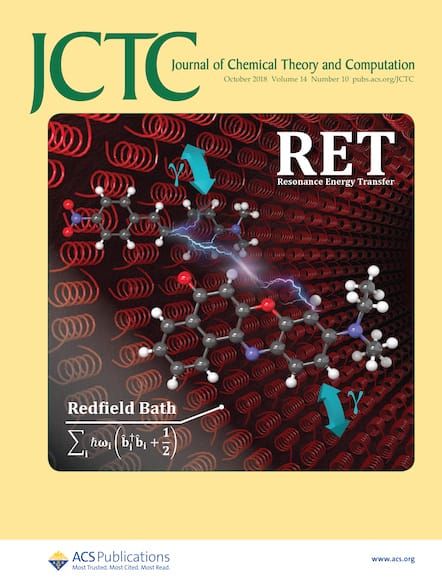时变密度泛函理论中远距校正交换-相关泛函和进程泛函的稳定性。
IF 5.7
1区 化学
Q2 CHEMISTRY, PHYSICAL
引用次数: 0
摘要
固体光学吸收光谱中的激子效应可以用线性响应体系中的时间依赖密度泛函理论(TDDFT)来描述,使用一类简单的近似、远程校正(LRC)交换相关泛函。最近的研究表明,LRC近似也可以用于实时TDDFT来描述激子动力学。在这里,我们使用二维模型实体来研究时变LRC方法的数值稳定性。发现具有LRC矢量势的时变Kohn-Sham方程随着激子结合能的增加而变得越来越不稳定。这些不稳定性的起源可以追溯到零力定理的时间平均违反,这导致了一个简单而鲁棒的数值稳定方案。这解释并证明了Dewhurst, J. K.[物理学家]最近提出的一种方法。[j] .生物工程学报[j] . 2025, 111, L060302]稳定LRC矢量电位,称为Proca程序函数。本文章由计算机程序翻译,如有差异,请以英文原文为准。
Stability of the Long-Range Corrected Exchange-Correlation Functional and the Proca Procedural Functional in Time-Dependent Density-Functional Theory.
Excitonic effects in the optical absorption spectra of solids can be described with time-dependent density-functional theory (TDDFT) in the linear-response regime, using a simple class of approximate, long-range corrected (LRC) exchange-correlation functionals. It was recently demonstrated that the LRC approximation can also be employed in real-time TDDFT to describe exciton dynamics. Here, we investigate the numerical stability of the time-dependent LRC approach using a two-dimensional model solid. It is found that the time-dependent Kohn-Sham equation with an LRC vector potential becomes more and more prone to instabilities for increasing exciton binding energies. The origin of these instabilities is traced back to time-averaged violations of the zero-force theorem, which leads to a simple and robust numerical stabilization scheme. This explains and justifies a recently proposed method by Dewhurst, J. K. [ Phys. Rev. B 2025, 111, L060302] to stabilize the LRC vector potential, known as the Proca procedural functional.
求助全文
通过发布文献求助,成功后即可免费获取论文全文。
去求助
来源期刊

Journal of Chemical Theory and Computation
化学-物理:原子、分子和化学物理
CiteScore
9.90
自引率
16.40%
发文量
568
审稿时长
1 months
期刊介绍:
The Journal of Chemical Theory and Computation invites new and original contributions with the understanding that, if accepted, they will not be published elsewhere. Papers reporting new theories, methodology, and/or important applications in quantum electronic structure, molecular dynamics, and statistical mechanics are appropriate for submission to this Journal. Specific topics include advances in or applications of ab initio quantum mechanics, density functional theory, design and properties of new materials, surface science, Monte Carlo simulations, solvation models, QM/MM calculations, biomolecular structure prediction, and molecular dynamics in the broadest sense including gas-phase dynamics, ab initio dynamics, biomolecular dynamics, and protein folding. The Journal does not consider papers that are straightforward applications of known methods including DFT and molecular dynamics. The Journal favors submissions that include advances in theory or methodology with applications to compelling problems.
 求助内容:
求助内容: 应助结果提醒方式:
应助结果提醒方式:


